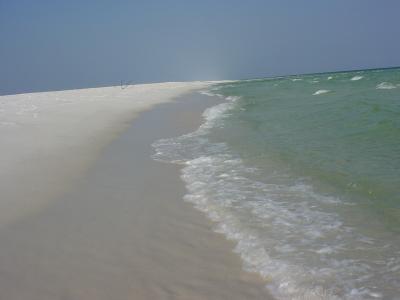Adapting to Climate Change in Olympic National Forest
Photo attributed to KevinM~commonswiki (assumed based on copyright claims). Incorporated here under the Creative Commons Attribution 3.0 Unported license. No endorsement by licensor implied.
Posted by
Jessi KershnerProject Summary
Olympic National Forest (ONF) is comprised of approximately 600,000 acres on the Olympic Peninsula in western Washington. The ONF Land and Resource Management Plan (OLRMP), which is focused on maintaining biodiversity and restoring important habitats, acts as the guide for natural resource management activities in ONF. By promoting landscape diversity and biodiversity, the OLMP facilitates resilience and increases adaptive capacity. In addition to the OLRMP, the U.S. Forest Service continues to educate ONF managers on climate change science and impacts and conducted a vulnerability assessment to facilitate development of adaptation strategies. The ONF has collaborated with U.S. Forest Service Research Stations to revise the Northwest Forest Plan, a regional plan that amends the OLRMP’s management strategies for the ONF.
Background
ONF is located on the Olympic Peninsula in western Washington State. The forest comprises approximately 635,000 acres, including five wilderness areas, and surrounds Olympic National Park (ONP). Ecosystem services from ONF include municipal water supply, nearly pristine air quality, fish and wildlife, key habitat for threatened species, recreation, and timber. Climate change impacts on the Olympic Peninsula (e.g., increased mean air temperature, changes in precipitation, and increased storm severity) are likely to influence the distribution and abundance of plant and animal species, thus affecting vital ecosystem services in the region. Natural resource management in ONF has been shaped by historical land use and forest fragmentation. ONF consists of large areas of second-growth forest and is considered a “restoration forest” where natural resource management activities are focused on restoring important habitats, rehabilitating or restoring impacts from unmaintained logging roads, invasive species control, and monitoring.
The OLRMP, which guides management activities at ONF, was initially created in 1990 and is revised every 10 years. Adaptation to climate change is not fully addressed in the original OLRMP and is not included in most management planning actions. However, ONF management objectives do promote landscape diversity and biodiversity, ultimately facilitating resilience. In 1994, the OLRMP was amended by the U.S. Forest Service’s Northwest Forest Plan (NWFP) to include the establishment of late-successional reserves, an Olympic Adaptive Management Area, ONF wilderness as “Congressionally Reserved Areas”, Riparian Reserves, designation of Key Watersheds, and standards and guidelines to manage the new land management activities. The ONF, as part of the U.S. Forest Service Pacific Northwest Region (Region 6), has contributed to the revision and modernization of the NWFP through a collaborative effort with other National Forests and Research Stations in the region. While the OLRMP is not replaced by the NWFP, it is amended to include new land and resource management strategies.
In 2008, the U.S. Forest Service began an Olympic Climate Change Case Study as part of a larger effort called the WestWide Climate Initiative. This initiative provided climate change information and adaptation tools to land managers in the western United States. The Olympic Climate Change Case Study had two phases: (1) educate ONF managers on climate change science and potential impacts, and (2) conduct a vulnerability assessment to facilitate the development of adaptation strategies for ONF. These projects were a collaborative effort by the U.S. Forest Service, Olympic National Forest, and Olympic National Park. Results from the case study were presented in the 2011 report “Adapting to Climate Change at Olympic National Forest and Olympic National Park.” Additionally, the vulnerability assessment was released in 2011 as “Climate Change and Forest Biodiversity: A Vulnerability Assessment and Action Plan for National Forests in Western Washington.”
Implementation
The vulnerability assessment process consisted of three steps: (1) review available climate model projections to establish susceptibility to climate change on the Olympic Peninsula; (2) review literature and available models to discover likely climate change vulnerabilities for hydrology and roads, fish, vegetation, and wildlife; and (3) review current management practices at ONF and evaluate institutional capacity to implement adaptation actions. Following the assessment, science-management workshops were held during which time managers identified general priority actions for adaptation, as well as priorities for species and habitat protection and monitoring.
Particular strategies that were identified as potential sources of resilience in ONF included increasing landscape diversity, maintaining biological diversity, and employing early detection/rapid response for invasive species. Multiple actions were recommended for each strategy. Several barriers were also identified that limit the adaptive capacity of ONF. They were: (1) failure to incorporate climate change into policy, regulations, and guidelines; (2) limited resources; (3) lack of a long-term, management-science partnership with decision-specific information; (4) a lengthy planning process for management actions; and (5) adopting unclear priorities and guidelines. Recommendations to overcome these barriers were also identified: (1) develop a manager’s guide to climate impacts and adaptation; (2) develop science-management partnership focused on climate change; (3) incorporate climate change into policies; (4) re-evaluate the appropriateness of laws and policies in dealing with climate change; (5) create clear and consistent priorities that provide guidance but are flexible; (6) allocate resources for adaptation; and (7) increase education and outreach efforts to promote awareness.
Building on the 2011 case study and vulnerability assessment, ONF has continued to update land and resource management strategies. In 2015, the ONP and the Gifford Pinchot National Forest, held a Forest Plan Revision Listening Session with the goals of better understanding how to engage the public in revisions, sharing current planning for the revision, and sharing how science will inform these efforts. Climate change impacts on land use, habitats, species, and resource management were shared as foci for plan revisions.
In 2018, the Pacific Northwest Region and Pacific Southwest Region Research Stations released a collaborative synthesis of strategies to revise and modernize forest plans within the NWFP area (i.e., OLRMP). The synthesis report includes a chapter entitled “Climate Change, Disturbance, and Vulnerability to Vegetation Change in the Northwest Forest Plan Area.” This chapter includes strategies for adaptation and mitigation to climate change. The climate change vulnerabilities of the NWFP area addressed in the report include increased drought stress, loss of forest cover, exotic species, and increased area affected by fire, insects, and pathogens. Two adaptation tactics to address these vulnerabilities include: (1) manipulating stand and landscape structure with management tools (i.e., thinning or prescribed fire); and (2) maintaining land connectivity for natural species migration in order to foster genetic and phenotypic diversity. Climate change is considered throughout the plan regarding future impacts on aquatic and riparian ecosystems, biodiversity, old-growth forests, and forest succession.
Outcomes and Conclusions
The effects of climate change on forest ecosystems are already detectable and are likely to exacerbate current ecosystem stressors at ONF. These impacts will threaten the natural and cultural resources of ONF, thus adaptation is necessary to ensure the sustainability of ecosystem services. To facilitate effective adaptation, multiple components are required: (1) a clear vision of what is needed, (2) removal of any barriers, (3) increased collaboration among stakeholders, and (4) enabling proven strategies (e.g., early detection/rapid response). While ONF management priorities (e.g., restoration) are consistent with promoting resilience and adaptation, they are constrained by available resources and scientific uncertainty. Recent collaborations in the NWFP area have allowed ONF to address some of these constraints and push forward in climate change adaptation planning.
Citation
Kershner, J. and Braddock, K.N. (2021). Adapting to Climate Change in Olympic National Forest [Case study on a project of the U.S. Forest Service Pacific Northwest Research Station, Olympic National Forest, and Olympic National Park]. Version 2.0. Product of EcoAdapt's State of Adaptation Program. Retrieved form CAKE: https://www.cakex.org/case-studies/adapting-climate-change-olympic-national-forest (Last updated May 2021)





